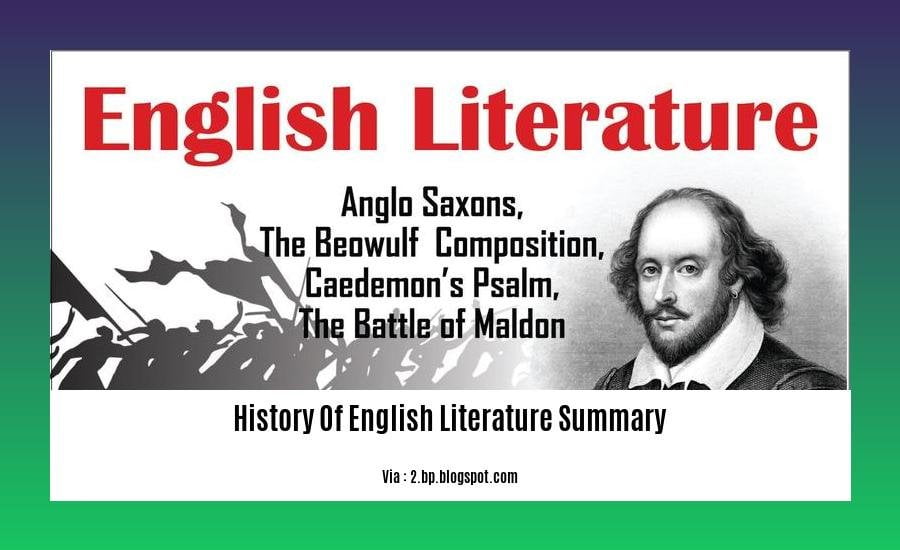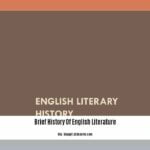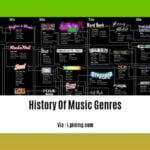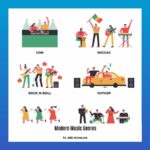Embark on a captivating journey through the annals of English literature in [A Journey Through Time: A Summary of English Literature’s Rich History]. From the Anglo-Saxon era’s epic sagas to the modern era’s introspective novels, discover how historical contexts have shaped literary expression, influencing everything from themes and genres to language and style. Explore the works of literary giants like Shakespeare, Austen, and Dickens, and trace the evolution of literary movements from Romanticism to Modernism. This exploration of English literature promises a captivating voyage through time, unveiling the profound impact of historical contexts on the written word.
Key Takeaways:
- English literature’s history is divided into seven distinct periods.
- The Anglo-Saxon or Old English period, dating from 450 to 1066, marks the beginning of recorded works in English, including the epic poem Beowulf.
- The Anglo-Norman or Middle English period, spanning from 1066 to 1500, succeeded the Norman Conquest.
- The Renaissance period, from 1500 to 1660, witnessed a revival of classical learning and humanistic beliefs.
- Old English literature encompasses a variety of genres, including chronicles, sermons, heroic poetry, translations of the Bible, hagiography, and legal writings.
History of English Literature Summary
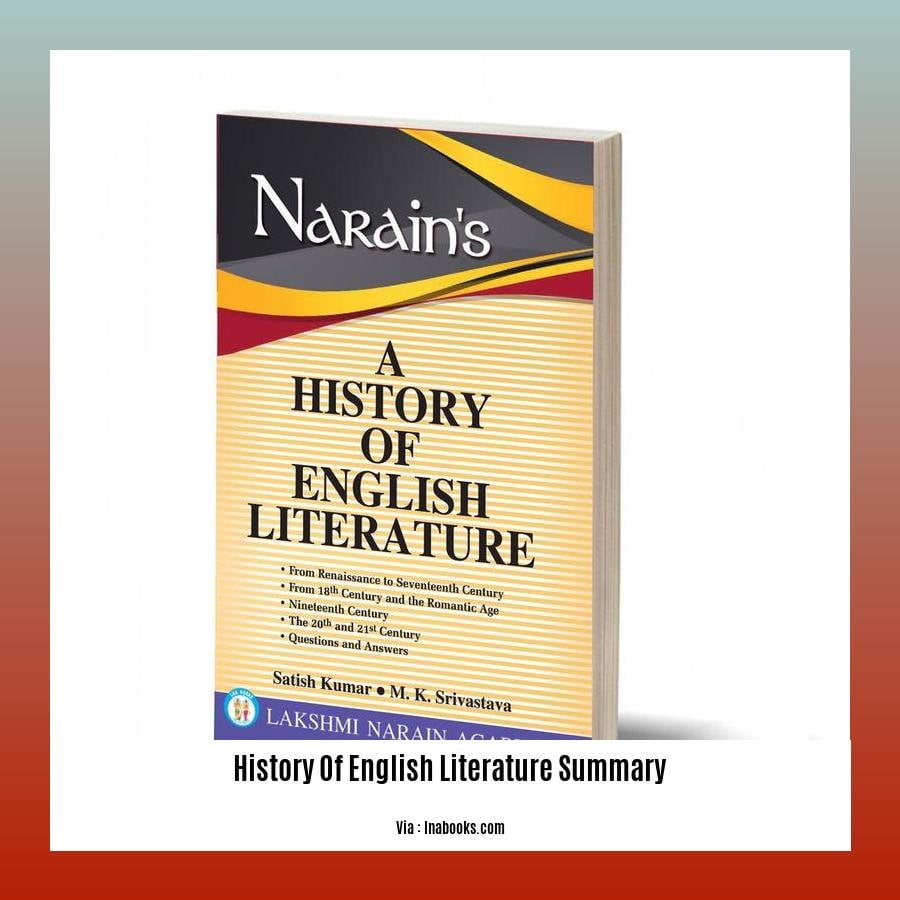
Dive into the fascinating world of English literature as we explore its rich and diverse history, spanning centuries of literary genius. From epic poems to modern masterpieces, get ready to embark on a journey through time, tracing the evolution of language, culture, and literary forms that have shaped the literary landscape of England.
Old English Period (450-1066)
- The Anglo-Saxon or Old English period marks the beginning of English literature, featuring epic poems like “Beowulf” and religious texts like “Caedmon’s Hymn.”
- This period showcases a strong oral tradition, with stories and poems passed down through generations before being written down.
Middle English Period (1066-1500)
- The Norman Conquest in 1066 brought about significant changes, leading to the development of Middle English, a blend of Old English and French.
- Geoffrey Chaucer emerges as a prominent figure, revolutionizing English literature with his masterpiece “The Canterbury Tales.”
- This period is marked by a growing emphasis on realism and the exploration of human nature.
Renaissance Period (1500-1660)
- The Renaissance period witnessed a revival of classical learning and humanism, fostering a love for knowledge and exploration.
- William Shakespeare, the greatest playwright of all time, dominates this era, captivating audiences with his tragedies, comedies, and historical plays.
- The works of John Milton, Edmund Spenser, and Francis Bacon further exemplify the literary brilliance of this period.
Neoclassical Period (1660-1798)
- The Neoclassical period ushered in a focus on reason, order, and decorum, drawing inspiration from classical literature.
- John Dryden and Alexander Pope stand out as prominent figures, employing satire and heroic couplets to explore universal themes.
- The rise of the novel marks a significant development during this time, with works like “Robinson Crusoe” by Daniel Defoe.
Romantic Period (1798-1837)
- The Romantic period celebrated emotion, imagination, and the individual, breaking away from the rigidity of the Neoclassical era.
- William Wordsworth, Samuel Taylor Coleridge, and Percy Bysshe Shelley lead the Romantic movement, emphasizing the beauty of nature and the power of the human spirit.
- Gothic novels, such as “Frankenstein” by Mary Shelley, gained popularity during this time.
Victorian Period (1837-1901)
- The Victorian era saw a surge in literary output, reflecting the social, economic, and political changes of the time.
- Charles Dickens, Charlotte Brontë, and George Eliot emerge as literary giants, exploring themes of social justice, class conflict, and the human condition.
- The rise of realism and the emergence of the detective novel further characterize this period.
Modern Period (20th Century Literature)
- The 20th century witnessed a multitude of literary movements, from modernism to postmodernism, challenging traditional forms and structures.
- James Joyce, Virginia Woolf, and T.S. Eliot are among the pioneers of modernism, experimenting with stream of consciousness and fragmented narratives.
- Postmodernism, represented by authors like Salman Rushdie and Don DeLillo, questions the very nature of truth and reality.
As we conclude our journey through the history of English literature summary, it’s evident that this literary landscape is a testament to the ever-evolving nature of language, culture, and society. From the epic tales of old to the thought-provoking works of contemporary times, English literature continues to captivate and inspire readers worldwide.
Have you always been interested to know how English drama originated or and how it evolved? Learn the detailed history of English drama through this well-researched notes. History of English Drama Notes.
Want to know the different periods of English literature? Our comprehensive guide offers insights into the various literary epochs, from the medieval to the modern era. History of English Literature Periods.
If you’re interested in Filipino fashion history, look at our comprehensive guide that delves into the evolution of style and clothing in the Philippines, from pre-colonial times to the 21st century. History of Fashion in the Philippines.
Renaissance and Early Modern Literature: Examining the transformative power of the Renaissance, including the works of Shakespeare, Marlowe, and Milton, and the rise of the novel.
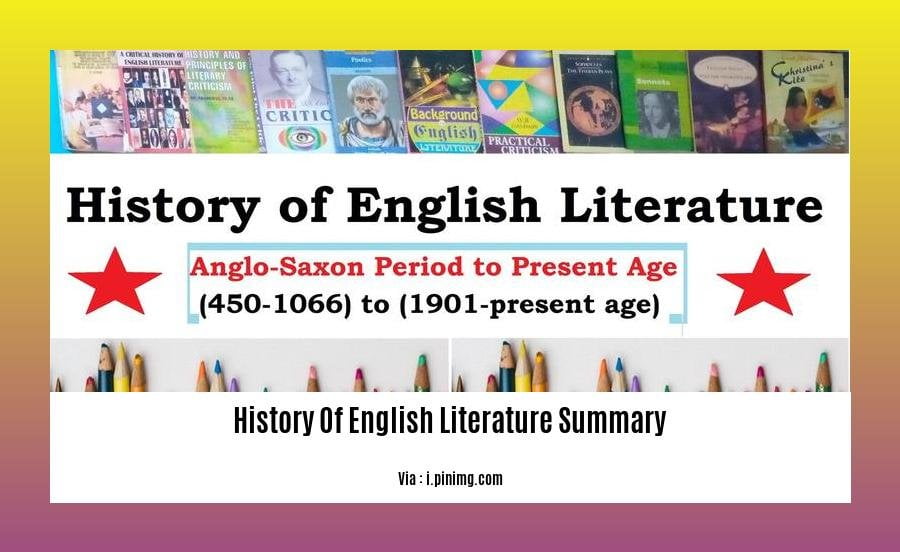
Key Takeaways
The Renaissance and early modern literature eras are vital in the development of literary genres and themes.
The Renaissance period (14th to 17th centuries) focused on humanism, classicism, and individualism.
Humanism emphasized individual expression and self-worth, while classicism drew inspiration from ancient Greek and Roman literature.
The early modern period (16th to 18th centuries) saw the diversification and complexity of literature, including the rise of the novel, the development of drama, satire, and utopia.
The novel became a dominant genre during the early modern period, providing more in-depth storytelling possibilities.
Drama flourished during the Renaissance and early modern era, with Shakespeare exploring human nature in his plays.
The development of satire and utopia genres allowed for the criticism of society and the imagining of idealized worlds.
The Renaissance: A Rebirth of Humanism and Classicism
The Renaissance was a remarkable period characterized by a profound interest in humanism. Humanism championed the study of ancient Greek and Roman literature, encouraging writers to explore human nature, individual potential, and self-expression. This era witnessed a surge in creativity across various literary genres.
The Early Modern Period: Diversification and Complexity
The early modern period brought a diverse array of literary genres. The novel emerged as a dominant force, providing a dynamic medium for storytelling. Drama flourished, with playwrights delving into the depths of human nature and social issues. Satire emerged as a powerful tool to critique society, while utopias offered visions of ideal worlds, presenting a contrasting perspective to the challenges of the time.
Influential Figures of the Renaissance and Early Modern Periods
William Shakespeare: Shakespeare’s plays, spanning tragedies to comedies, mirror the complexities of human emotion, exploring themes of love, ambition, jealousy, and the human condition.
Christopher Marlowe: Marlowe’s plays, marked by lyrical beauty and intensity, examine human striving for knowledge and power, often culminating in tragic outcomes.
John Milton: Milton’s epic poem “Paradise Lost” delves into profound themes of good versus evil, temptation, and the consequences of disobedience.
Sources:
Romantic and Victorian Literature: Exploring the Romantic era, marked by emotional expression, individualism, and the Gothic movement, and the subsequent Victorian era, which saw the rise of social realism and the Brontë sisters.
A Walk Through the Romantic Epoch:
The Romantic era, spanning from the late 18th century to the early 19th century, marked a significant shift in literary expression. Romantics celebrated emotions, individualism, and the power of nature. They challenged the prevailing norms, seeking inspiration in the past and the exotic. Poets like Wordsworth, Coleridge, and Shelley led the charge, advocating for a return to simpler, more sentimental forms of storytelling. Gothic novels, such as Mary Shelley’s Frankenstein, emerged as emblems of the era, weaving tales of horror and the supernatural.
The Victorian Era: A Tapestry of Social Realism:
The Victorian era, which followed the Romantics, ushered in a new era of social realism. With the rise of industrialization came a surge of literature that explored the impact of societal change on individuals and communities. Charles Dickens, Charlotte Brontë, and George Eliot emerged as literary giants of the time, delving into themes of social justice, class struggle, and the human condition. Their works, such as Dickens’ Oliver Twist and Brontë’s Jane Eyre, captured the complexities of Victorian society, laying bare its flaws and injustices.
Key Takeaways:
The Romantic era celebrated emotions, individualism, and the power of nature.
Poets like Wordsworth, Coleridge, and Shelley championed the Romantic movement.
During the Victorian era, literature explored the impact of industrialization and social change.
Charles Dickens, Charlotte Brontë, and George Eliot were prominent Victorian writers.
Victorian literature addressed themes of social justice, class struggle, and the human condition.
Sources:
- The Romantic Period in English Literature
- The Victorian Era in English Literature
Modern and Contemporary Literature: Tracing the evolution of literature in the 20th and 21st centuries, including modernism, postmodernism, and the diverse voices of contemporary writers shaping the literary landscape.
The 20th and 21st centuries have witnessed a fascinating journey of literary evolution, characterized by groundbreaking movements like modernism and postmodernism, and a surge of diverse voices from around the globe. Let’s delve into this rich tapestry of modern and contemporary literature:
Modernism: A Revolution in Literary Expression
In the early 20th century, modernism emerged as a bold departure from traditional narratives and Victorian conventions. This movement embraced experimentation, individualism, and a profound sense of alienation.
Key Figures: James Joyce, Virginia Woolf, and T.S. Eliot were at the forefront of modernism, challenging established norms with works like “Ulysses,” “To the Lighthouse,” and “The Waste Land.”
Themes: Modernist literature delved into themes of fragmentation, disillusionment, and the complexities of the human condition, reflecting the uncertainties of a rapidly changing world.
Techniques: Stream-of-consciousness, interior monologue, and non-linear narratives were employed to convey the inner workings of characters’ minds.
Postmodernism: Questioning Truth and Reality
In the latter half of the 20th century, postmodernism emerged, characterized by a skepticism towards traditional notions of truth, reality, and language.
Key Figures: Salman Rushdie, Don DeLillo, and Margaret Atwood are among the prominent postmodern writers who challenged conventional narratives and explored the relativity of truth.
Themes: Postmodern literature often blurs the lines between fiction and reality, embracing irony, parody, and metafiction to question the nature of storytelling itself.
Techniques: Intertextuality, self-reflexivity, and a playful use of language are common features of postmodern texts, encouraging readers to actively engage with the complexities of the narrative.
Contemporary Literature: A Tapestry of Global Voices
The 21st century has witnessed an explosion of diverse voices in contemporary literature, reflecting the interconnectedness of a globalized world.
Global Perspectives: Writers from across continents, such as Chimamanda Ngozi Adichie, Arundhati Roy, and Haruki Murakami, bring unique perspectives, challenging traditional Eurocentric narratives.
Genre Bending: Contemporary literature often defies traditional genre boundaries, blending fiction, non-fiction, and poetry to create hybrid forms that reflect the complexities of modern life.
Social Issues: Contemporary writers frequently explore pressing social issues such as identity, migration, climate change, and social justice, reflecting the interconnectedness of our global community.
Key Takeaways:
– Modernism revolutionized literary expression with its emphasis on experimentation, individualism, and the exploration of inner consciousness.
– Postmodernism challenged traditional notions of truth and reality, embracing irony, parody, and intertextuality.
– Contemporary literature is characterized by diverse global voices, genre-bending narratives, and a focus on pressing social issues.
Relevant URL Sources:
–
–
FAQ
Q1: What are the major periods in the history of English literature?
A1: English literature can be divided into seven significant periods: Anglo-Saxon, Anglo-Norman, Renaissance, Neoclassical, Romantic, Victorian, and Modern. Each period is characterized by distinct literary genres, themes, and styles.
Q2: What are some notable works from the Renaissance period?
A2: The Renaissance period produced significant literary masterpieces, including plays by William Shakespeare, epics like John Milton’s Paradise Lost, and philosophical essays by Francis Bacon. These works showcased a renewed interest in humanism, classicism, and individualism.
Q3: How did the Romantic period influence literature?
A3: The Romantic period emphasized individual expression, imagination, and the exploration of the natural world. Prominent Romantic poets included William Wordsworth, Samuel Taylor Coleridge, and John Keats, while authors like Mary Shelley and Jane Austen contributed to the development of the novel during this time.
Q4: What are the characteristics of modernist literature?
A4: Modernist literature, prevalent in the 20th century, showcased themes of fragmentation, disillusionment, and the complexities of the human condition. Notable modernist writers included James Joyce, Virginia Woolf, and T.S. Eliot, who experimented with stream-of-consciousness, interior monologue, and non-linear narratives.
Q5: What genres were popular during the Old English period?
A5: Old English literature consisted of various genres, including epic poetry (e.g., Beowulf), chronicles, sermons, legal writings, translations of the Bible, hagiography, and heroic poetry. These works offered insights into the cultural and historical context of Anglo-Saxon England.
- Sept 31 Myth: Unveiling Calendar Secrets - March 18, 2025
- How Long & Till December 18, 2025: Accurate Countdown Guide - March 18, 2025
- Discover Japanese Artists: A Complete History - March 18, 2025
